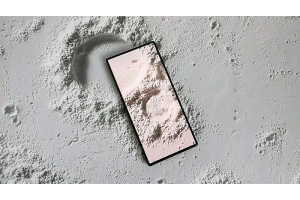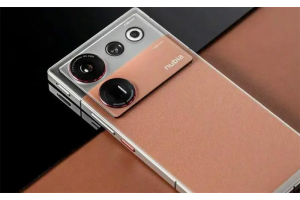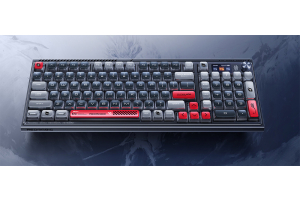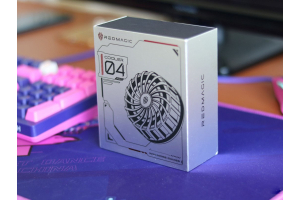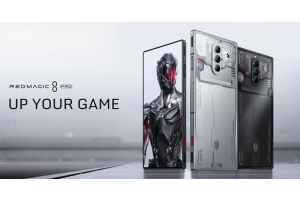Nubia Focus 5G Review: Budget Smartphone with 100MP Camera & Dual Glass Design
In today’s smartphone market, entry-level phones seem to have faded from consumers' attention. In the past, brands like Redmi and Meizu actively promoted products in this segment, not only performing well in hardware configurations but also offering reliable software experiences. However, over time, these manufacturers either withdrew from this field or reduced their marketing efforts for such models.
The Nubia Focus 5G smartphone is an entry-level smartphone. Its key features include a main camera with up to 100 million pixels, a dual-glass design, and a 5000mAh large-capacity battery, with an official starting price of only $110. Such a combination of configuration and price is indeed rare in the market.

Its design is clearly inspired by traditional digital cameras. From the camera position to the overall shape, it bears an astonishing resemblance to traditional digital cameras. Additionally, the contrast between light and dark colors and the spliced design further emphasize this camera-like appearance. Notably, its camera module also features Nubia’s iconic red circle as a decorative element, which not only adds visual appeal to the camera module but also reflects the brand's unique style.
Although the market's attention to entry-level phones may not be as high as before, judging by the design and features of this Nubia Focus 5G, it still has some appeal. Especially since it provides basic smartphone functions while meeting users' daily needs at a highly competitive price. Of course, consumers need to consider their personal needs and usage habits when deciding whether to buy such a product.
In today’s fiercely competitive smartphone market, various brands are constantly innovating to attract consumers' attention. Recently, a budget-friendly phone has garnered widespread attention in the market. It not only offers two stylish dual-tone color options, Dusk Blue and Dark Black but also makes an effort in material choices, adopting a dual-glass design and applying a micro-nano-level double-etched optical texture design in the camera area. This attention to detail and pursuit of perfection stands out among competitors at the same price level, as many products costing twice as much still opt for plastic bodies.
This phone features a 6.56-inch flat screen with a centered punch-hole design, which is speculated to be an LCD screen. Although the screen quality is entry-level, it supports a 120Hz high refresh rate and a 240Hz touch sampling rate, providing users with a smooth visual experience. Additionally, the phone includes an ink-screen display mode and blue-light filtering mode, features that not only protect the user's eye health but also enhance the product's appeal.

From a professional standpoint, although this phone has a clear advantage in terms of cost-performance ratio, there is still room for improvement in its appearance design. For example, the control of the overall screen bezel is not ideal, especially the rather conspicuous chin, which affects the overall aesthetics of the product. However, given its budget-friendly price point, these design compromises might be understandable and acceptable.
This phone shows impressive performance in terms of material selection, screen technology, and cost-performance ratio, but there is still room for further optimization in the handling of design details. For consumers with limited budgets but who wish to try new technologies, this phone undoubtedly offers an option worth considering. However, for those who pursue extreme appearance and high-end experiences, they might need to consider more carefully.
In today's smartphone field, photography features have become a key indicator of device performance. This article will delve into a smartphone equipped with a 100-million-pixel main camera and an f/1.75 large aperture. The device does not support OIS optical image stabilization technology, uses a 1/1.67-inch large sensor, and is paired with a 2MP macro lens, forming a dual-camera rear system. Additionally, the phone features the Neovision Tai Shan AI imaging system derived from Nubia’s flagship models, combining advanced optical technology and AI computational photography to offer innovative and diverse photography experiences.

By analyzing the official sample photos, we can observe some key imaging characteristics. First, the sample shows good white balance control, which is largely attributed to the large 100-million-pixel sensor. It can maintain color accuracy and detail clarity in different shooting conditions. Even with imperfect composition, the high-resolution sensor ensures that cropped parts of the image remain of high quality.
The performance of the AI lightning capture feature is commendable. This feature can capture dynamic scenes in an instant, avoiding blur and focus issues while maintaining the dynamic feel of the image. Although it may face challenges in extreme motion shots, the technology generally delivers satisfactory results.
As for the Super Night Mode, this is a challenging feature for low-light photography. According to the samples, this phone can maintain clarity and transparency in night shots. Although it may not rival some high-end flagship models in sharpness, it excels in keeping the image clean and clear.
For a comprehensive evaluation of this phone's photography capabilities, we need to adopt a cautious approach. While the official sample photos seem impressive, we must consider that these were taken under ideal conditions and may not fully reflect real-world performance in everyday use. For example, the lack of OIS optical image stabilization may affect image stability and clarity when shooting dynamic scenes or in handheld photography. Likewise, although AI enhancement can improve photo quality, over-reliance on post-processing may sacrifice some of the natural details of the image.
This smartphone indeed showcases some intriguing photography features, especially with the large sensor and advanced AI imaging processing technology. However, its true capabilities in the face of fierce market competition and increasingly demanding user expectations still need more real-world usage to verify. Therefore, when choosing, consumers should comprehensively consider the match between the device’s photography features and their actual needs, while also paying attention to factors that may affect the final image quality.

In today’s competitive smartphone market, the Nubia Focus 5G version has gained some attention thanks to its adoption of the domestic Unisoc T760 SoC processor. This device comes standard with 256GB of large storage and UFS 3.1 high-speed flash memory across all models, which is not uncommon among similar products. However, for users pursuing high-performance experiences, performance may become their primary focus.
Although the Unisoc T760 is a chip based on a 6nm process, and the official claims optimization through the Lingxi Performance Engine, in actual performance evaluations, this phone’s score is about 470,000, which is considered entry-level in today’s 5G smartphone market. This may mean that while it can meet daily usage needs, it may show some limitations when handling high-load tasks.
Given the growing demand for high-performance phones in the market, the performance positioning of the Nubia Focus 5G version may affect its competitiveness in the high-end market. Users may need to balance its price, performance, and specific usage scenarios when deciding whether it meets their needs. For those who do not pursue extreme performance and place more value on cost-effectiveness, the Nubia Focus 5G version may be a good choice. However, for users looking to perform tasks such as gaming, high-definition video editing, or other high-intensity tasks on their phone, they may consider more powerful processor options. Overall, the Nubia Focus 5G version may have its market among certain user groups, but its performance still needs improvement in the overall 5G smartphone market.
In today’s smartphone market, the integration of AI technology has become an important means of enhancing user experience. However, for entry-level devices, this integration is often limited to surface-level AI applications, such as voice recognition and translation functions, without achieving deeper integration.

Take Nubia’s latest budget phone, for example. While it runs the MyOS system and comes with a 5000mAh battery, it only supports 10W charging, which somewhat limits its performance. Considering its LCD screen and mid-level SoC processor, this phone can sustain about one day of battery life during daily use. For light users, such as the elderly, charging once every two days might be feasible.
Although this device adopts some traditional small-brand configurations, such as using a domestic SoC, an LCD screen, and non-fast-charging technology, it also attempts to enhance its competitiveness by adding a 100-million-pixel main camera and the Neovision Tai Shan AI imaging system. This strategy aims to improve image quality, allowing users to take clearer and more beautiful photos when capturing landscapes or daily life.
From a cost-effectiveness perspective, this phone does offer some value. Its price tag of a few hundred yuan does set certain practical limits, meaning we cannot have overly high expectations. However, for budget-conscious consumers, such an entry-level device could be a good choice, especially for those who are not chasing after high-end flagship models.
Nubia’s new phone seeks to attract consumers by maintaining cost-effectiveness while adding some unique features. While it may not be able to compete with high-end models in hardware configurations, its efforts in imaging at least provide users with a relatively good photography experience. For those looking for a cost-effective smartphone, this phone might be a worthy option.










